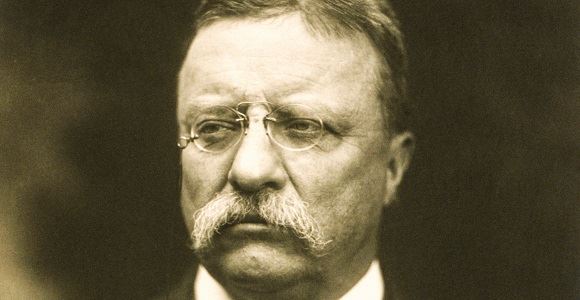
Theodore Roosevelt in the Spanish American War On April 25 1898, Theodore "Teddy" Roosevelt resigned as Acting Secretary of the U.S. Navy and together with Army Colonel Leonard Wood, formed the 1st U.S. Volunteer Cavalry Regiment; the newspapers called them "The Rough Riders." Like many other volunteer units, it was a temporary organization for the duration of the Spanish-American War. The regiment trained for several weeks in San Antonio, Texas; after securing modern multiple round Krag smokeless carbines, Roosevelt arrived on May 16. The Rough Riders used some standard issue gear and some of their own design, purchased with gift money. Diversity characterized the regiment, which included Ivy Leaguers, professional and amateur athletes, upscale gentlemen as well as cowboys, frontiersmen, Native Americans, hunters, miners, prospectors, former soldiers, tradesmen, and sheriffs. The Rough Riders were part of the cavalry division commanded by the former Confederate General Joseph Wheeler. It was one of 3 divisions in V Corps under Lt General William Rufus Shafter. Wood, Roosevelt and their men departed Tampa on June 13, landed in Daiquiri, Cuba, on June 23, and marched to Siboney. Wheeler sent elements of the 1st and 10th Regular Cavalry on the lower road Northwest and sent the 1st USV "Rough Riders" on the parallel road running along a ridge up from the beach. To throw off his infantry rival, Wheeler left one regiment of his Cavalry Division, the 9th, at Siboney so that he could claim that his move North was only a limited reconnaissance if things went wrong. Roosevelt was promoted to Colonel and took command of the regiment when Wood was moved up to command the brigade. The Rough Riders had a short, minor skirmish known as the Battle of Las Guasimas, then fought their way through Spanish resistance and together with the Regulars forced the Spaniards to abandon their positions. Under Col. Roosevelt's leadership, the Rough Riders became famous for dual charges up Kettle Hill and San Juan Hill on July 1. Roosevelt had the only horse, and rode back and forth between rifle pits at the forefront of the advance up Kettle Hill, an advance that he urged in absence of any orders from superiors. He was forced to walk up the last part of Kettle Hill on foot after coming across a barbed wire entanglement. The victories came at a cost - 200 soldiers were killed and 1,000 wounded. Roosevelt commented on his role in the battles: "On the day of the big fight I had to ask my men to do a deed that European military writers consider utterly impossible of performance, that is, to attack over open ground an unshaken infantry armed with the best modern repeating rifles behind a formidable system of entrenchments. The only way to get them to do it in the way it had to be done was to lead them myself." In August, Col. Roosevelt and other officers demanded that the soldiers be returned home. Roosevelt always recalled the Battle of San Juan Hill as "the great day of my life" and "my crowded hour." In 2001, then President Bill Clinton posthumously awarded the Medal of Honor to Theodore "Teddy" Roosevelt for his actions during the Spanish-American War; he had been nominated during the war but Army officials, annoyed at his grabbing the headlines, blocked it. After return to civilian life, Roosevelt preferred to be known as "Colonel Roosevelt" or "The Colonel." However, the "Teddy" name remained much more popular with the public, even though Roosevelt openly despised it. Men working closely with Roosevelt customarily called him "Colonel" or "Theodore". |

